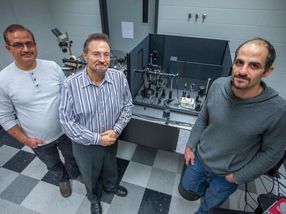New insights from the Mouse ENCODE Project published in Genome Research
Genome Research publishes three articles in conjunction with articles published in other journals describing recent advances from the Mouse ENCODE Project Consortium. Initially launched to complement the human Encyclopedia of DNA Elements (ENCODE) Project in 2008, the Mouse ENCODE Project aims to functionally characterize the mouse genome. The human and mouse genomes are roughly the same size and contain many stretches of uncharacterized, noncoding DNA that are thought to contain critical regulatory information. By comprehensively identifying functional regulatory regions in the mouse genome, including those in tissues and developmental stages inaccessible in human studies, the Mouse ENCODE Project is poised to further our understanding of human development and disease.
Approximately half of the mouse (and human) genome is composed of regions of mobile DNA known as transposable elements (TE), which, recent studies have demonstrated, contribute to gene regulation by harboring transcription factor binding sites. To investigate the extent of TE-mediated gene regulation, researchers from Washington University School of Medicine, Stanford University, and elsewhere mapped genome-wide binding profiles of 34 transcription factors in two cell types in human and mouse. A large fraction of the transcription factor binding sites (20%) was located in TEs, and most of these were species-specific. "The magnitude and diversity of transposable element-contributed gene regulatory elements was really surprising," said co-corresponding author Ting Wang. Additionally, the TEs bound by transcription factors had signatures of active chromatin regions. "Despite having long been thought to be silenced in cells by epigenetic mechanisms, these transposable elements escape in a cell type-specific manner," Wang said. The authors suggest transposable elements may be involved in the widespread rewiring of gene regulatory networks during evolution.
To understand how shared transcription factors can regulate distinct cell fates, researchers from Pennsylvania State University, the Children's Hospital of Philadelphia, and elsewhere also examined the regulatory network that controls the formation of red blood cells and megakaryocytes (platelet precursors). Both derive from multipotent blood cell precursors and differentiate using overlapping sets of transcription factors. By integrating genome-wide binding sites of four transcription factors (GATA1, GATA2, TAL1, and FLI1), histone modifications, and gene expression, the researchers demonstrate the shared transcription factors bind to different genomic locations and in different combinations, thus defining linage-specific regulatory networks during blood formation. "Some of these networks are already known to be dysregulated human disease," said co-corresponding author Mitchell Weiss. "Better understanding of these normal mechanisms could improve treatments of human blood diseases and facilitate the manufacture of various blood cells that can be used for transfusion therapies."
To further understand how a single transcription factor, TAL1, regulates distinct gene expression patterns during blood formation, Ross Hardison and colleagues examined the genome-wide occupancy of TAL1 in six mouse cell types representing the progression from multipotent blood precursor to megakaryocytes and red blood cells. The authors discover that despite the large number of sites TAL1 occupies in the genome, most sites are occupied exclusively in one cell type. The redistribution of TAL1 during differentiation is associated with expression of lineage-specific genes, and in many cases, TAL1 is directed to sites by the presence of other transcription factors, such as GATA, as well as linage-specific factors.
Original publication
Sundaram V, Cheng Y, Ma Z, Li D, Xing X, Edge P, Snyder MP, Wang T.; "Widespread contribution of transposable elements to the innovation of gene regulatory networks."; Genome Res. 2014.
Pimkin M, Kossenkov AV, Mishra T, Morrissey CS, Wu W, Keller CA, Blobel GA, Lee D, Beer MA, Hardison RC, Weiss MJ.; "Divergent functions of hematopoietic transcription factors in lineage priming and differentiation during erythro-megakaryopoiesis."; Genome Res. 2014.
Wu W, Morrissey CS, Keller CA, Mishra T, Pimkin M, Blobel GA, Weiss MJ, Hardison RC.; "Dynamic shifts in occupancy by TAL1 are guided by GATA factors and drive large-scale reprogramming of gene expression during hematopoiesis."; Genome Res. 2014.






















































